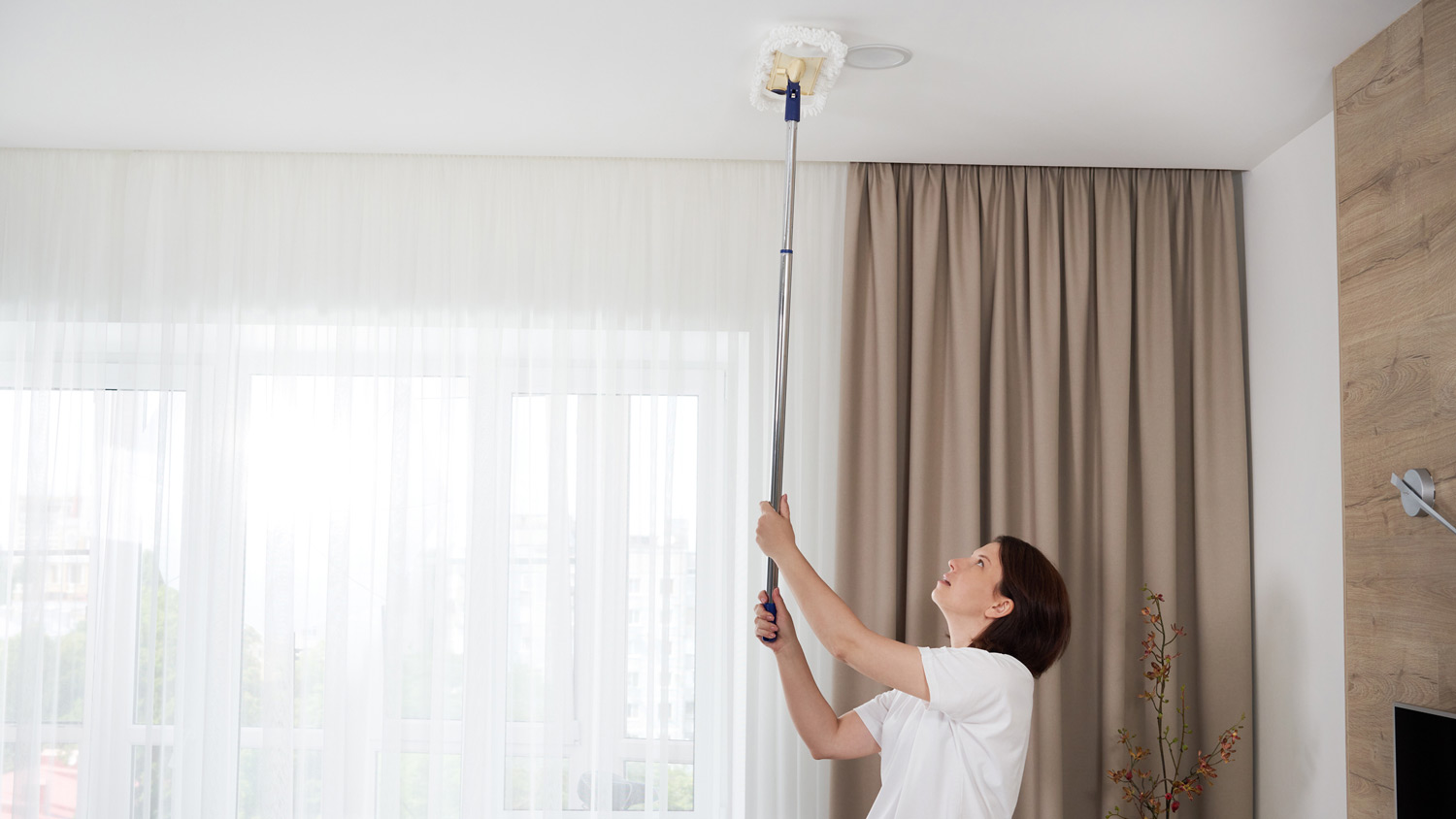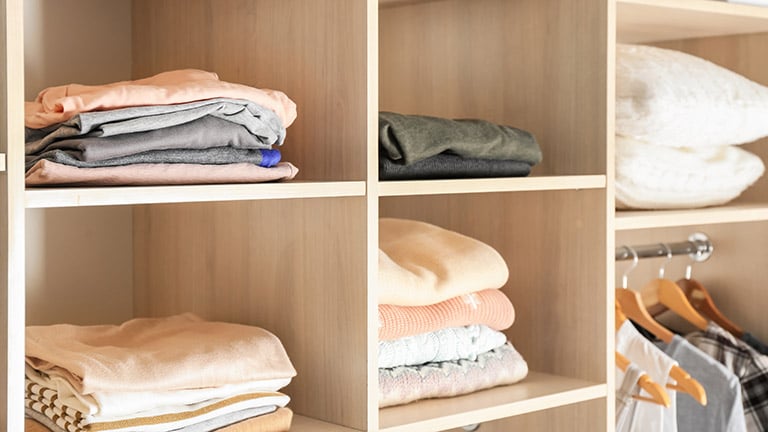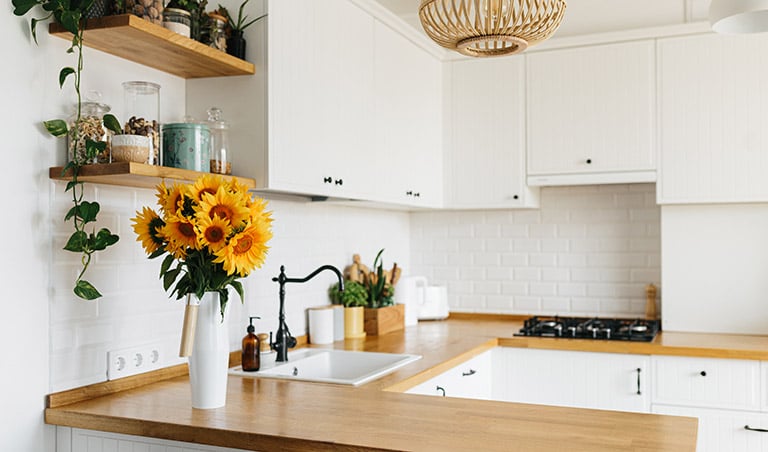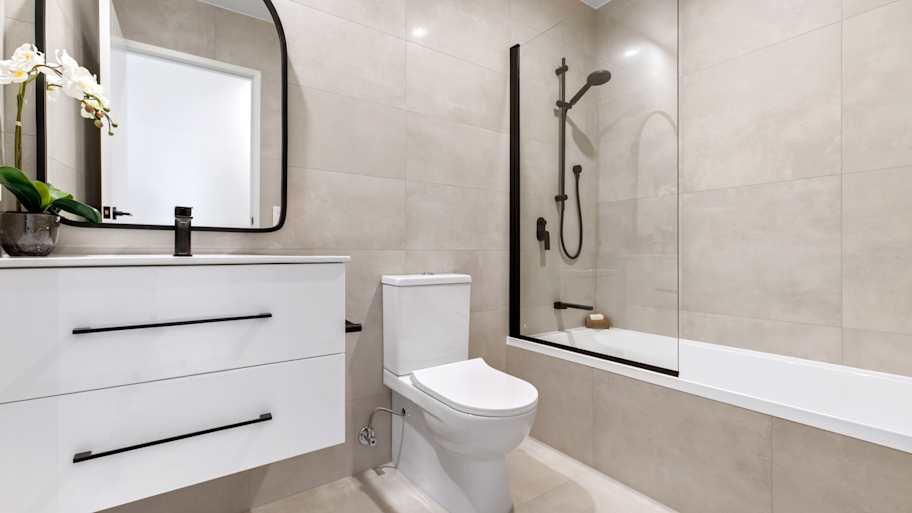
Discover the average acoustic ceiling cleaning cost, what affects pricing, and how to save. Get expert tips to budget for your acoustic ceiling cleaning project.
A decluttering checklist can help you quickly organize every room in your home


The decluttering process can be intimidating, especially if you only purge your home once or twice a year. With this decluttering checklist, you can efficiently declutter your home and learn how to keep organized moving forward. From the floors to the closets, learn how to organize your home in five easy steps.
Kitchens get dirty enough from cooking, so a little clutter makes the room feel like a total mess. Between the daily mess of cooking, snacks, and dishes, even a small amount of extra items can make the entire space feel overwhelming.
If you need help maintaining your kitchen and other high-traffic areas, consider hiring a local house cleaner on a weekly or monthly basis. Follow this checklist to turn the kitchen from sloppy to spotless:
Dirty dishes
Expired food and ingredients
Duplicate kitchen tools like spatulas, colanders, and more
Excess coffee mugs, cutlery, and dinnerware
Unused cookbooks
Tupperware or takeout containers without a matching lid
Junk drawer overflow
Spices that are rarely or never used
Reusable bags
Takeout menus
Anything on the countertop that isn’t used weekly
Your dining room is meant for gathering—though if you don’t declutter it on a regular basis, it can start to gather things instead of memories. When the table becomes a landing zone for homework, mail, or laundry, it’s time to reclaim it by clearing out these common sources of clutter:
Stacks of mail, paper, or receipts
Unfinished projects and craft supplies
Extra or mismatched chairs
Unused table linens
Leftover servingware from holidays or events
Dusty or broken decor
Outdated serving dishes
Seasonal decor
Getting a peaceful night’s sleep in a cluttered bedroom is tough. When your personal sanctuary is overwhelmed with piles of clothes, scattered accessories, or toys underfoot, it can become another source of stress. Whether you’re looking to clean up or clear things out, here are the main culprits:
Clothes and shoes
Children’s toys
Sheets that could go in a linen closet
Old reading materials like books and magazines
Excess throw pillows and blankets
Jewelry, wallets, and other accessories on the nightstand
Unmatched socks
Chargers, cables, and random electronics
Laundry baskets full of unworn or unused items
Empty boxes, shopping bags, and packaging
The clutter from other parts of the house often gets tossed into the closet. It’s out of sight and out of mind—until you open the closet door. Whether you’re dealing with a bedroom closet, hallway closet, or linen closet, taking some time to declutter can not only give you back your space but also your sanity. Here’s where to start:
Donate clothes you haven’t worn in over a year
Toss clothes that are ripped or permanently stained
Move out-of-season clothes to long-term storage
Utilize bins, shelf organizers, and over-the-door racks
Get rid of unused hangers
Use separate spaces for clothes and linens
Declutter shoes and accessories
Sort items by type and color
Add lighting if needed
Limit sentimental objects
Bathrooms are the smallest rooms in the house, so they’re often cluttered with miscellaneous products and appliances. With limited storage and a constant rotation of daily routines, it’s easy for countertops, drawers, and cabinets to overflow with half-used products and expired items. Since bathrooms should be a place of cleanliness and calm—not chaos—it’s worth taking a few minutes to simplify. These items are more likely to be an excess than a necessity:
Duplicate products like combs, razors, and makeup brushes
Empty containers for toiletries and cosmetics
Dirty, worn-out towels
Non-functional decor like plants and wall art
Cleaning supplies that can be stored elsewhere
Expired medication, from prescriptions to over-the-counter cough syrup
Unlabeled or mystery products
Old razors, loofahs, and toothbrushes
Unused hair tools
Makeup past its prime
Tangled cords, piles of paper, and scattered supplies can easily distract you from the main focus of your home office: working. A messy space can make it harder to concentrate and even increase stress levels. Stay organized at work by decluttering these parts of your home office:
Throw out any papers you don’t need
Organize the papers you need in folders, binders, and drawers
Organize cables with fasteners and multi-outlet power strips
Find containers for small supplies like pens, paper clips, and push pins
Purge unused supplies
Clear off your desk regularly
Put away reference books and other materials
Digitize whenever possible
Limit personal items
Consider rearranging furniture to improve layout
Your living room can be a space to relax and entertain, or it can become a magnet for clutter. If the latter is the case, you can take your room from chaotic to cozy by organizing what’s necessary for your living room to function. Here’s a checklist to jumpstart the process:
Clear off coffee and side tables
Corral remote controls in trays or baskets
Put away unused decor
Declutter bookshelves
Find a landing zone for kid or pet toys
Get rid of unused pillows or blankets
Tidy up electronics and game consoles
Limit paperwork buildup
Rehome items that don’t belong
Vacuum under cushions and furniture regularly
Follow these room-by-room tips to keep your house tidy all year long.
Since it’s one of the most used parts of the home, it can be tricky to keep your living room decluttered. These tips will help ensure all that initial clearing out doesn’t go to waste and your space stays free of unnecessary items:
Create a paper drop zone
Declutter for 5 minutes daily
Use closed storage when possible
Give everything a home
Set toy limits
Manage cords and chargers
Put random items away immediately
The key to a tidy bathroom is creating easy habits and smart storage solutions that work for your routine. You can keep your bathroom clean, clutter-free, and ready for guests (or just your own peace of mind) every day by completing the below tasks:
Store everything but essentials
Clean your counters off daily
Utilize drawer organizers
Avoid stockpiling extras
Keep cleaning supplies handy
Keep like items grouped together in bins

Closets are easy to fill—and just as easy to forget once their doors are closed. With a few simple habits, you can make your closet a space that’s functional, not frustrating.
Seasonal check-in to get rid of unworn or damaged clothing
When you buy something new, donate something old
Use bins for small accessories
Keep a donation bag and give it away once it’s full
Store off-season clothes somewhere else
Take 5 to 10 minutes weekly to re-hang or fold items

Your crisp, clean kitchen can easily spiral into a mess iif it’s not maintained on a regular basis. The good news? With a few smart systems and daily habits, you can keep your kitchen clean, functional, and clutter-free without a constant overhaul.
Clear counters daily
Keep a catch-all basket for mail, keys, and other items
Declutter your fridge weekly
Limit unnecessary dishware and utensils
Clear out your pantry monthly
Sort the junk drawer every other month
Once a restful retreat, your bedroom can become a source of stress (and sleepless nights) if laundry piles and random clutter start making themselves at home. Thankfully, a clutter-free bedroom doesn’t require perfection or a full-time housekeeper—just a few simple habits that help maintain order without much effort.
Make your bed every morning
Limit nightstands to a few items
Pick up clothing and shoes daily
Use baskets for odds and ends
Do a weekly reset to remove items that don’t belong
Declutter dresser tops daily
Hiring a professional organizer costs between $55 and $140 per hour. The overall cost depends on the number of rooms, the level of organization required, and your location. The average professional organizing visit costs $525, but budget at least $1,500 if hiring someone to organize the entire house. Most professional organizers offer free consultations, even if it’s just a preliminary phone call to discuss goals and expectations.
Hiring a professional organizer offers several benefits. They not only help homeowners declutter their living space but utterly revamp it with fresh ideas on interior design. They also create a strategy and budget to facilitate organizational goals. Ideally, it’s a collaborative process where homeowners can be involved as much or as little as they want. For those who don’t mind paying for professional insight, hiring an organizer is a reliable way to transform your home and daily habits. That said, decluttering and reorganizing are easy DIY projects that any homeowner can handle on their own if they have the time and patience.
From average costs to expert advice, get all the answers you need to get your job done.

Discover the average acoustic ceiling cleaning cost, what affects pricing, and how to save. Get expert tips to budget for your acoustic ceiling cleaning project.

Garage clean-out costs vary considerably depending on the garage size, the waste type and amount, and how much work you do yourself.

Tile and grout cleaning brings your tiled rooms back to life. In this guide, find out the details of how much it costs to hire tile and grout cleaners.

Tired of finding hard water stains around your home? Learn how to remove hard water stains from toilets, shower doors, counters, and more.

Get top tips for cleaning a bathroom, from quick DIY tricks to knowing when to hire a professional. Stay fresh, clean, and stress-free.

The benefits of steam cleaning your home are abundant, and you’ll wonder why you didn’t do it sooner. However, you must learn which materials cannot be steam cleaned.